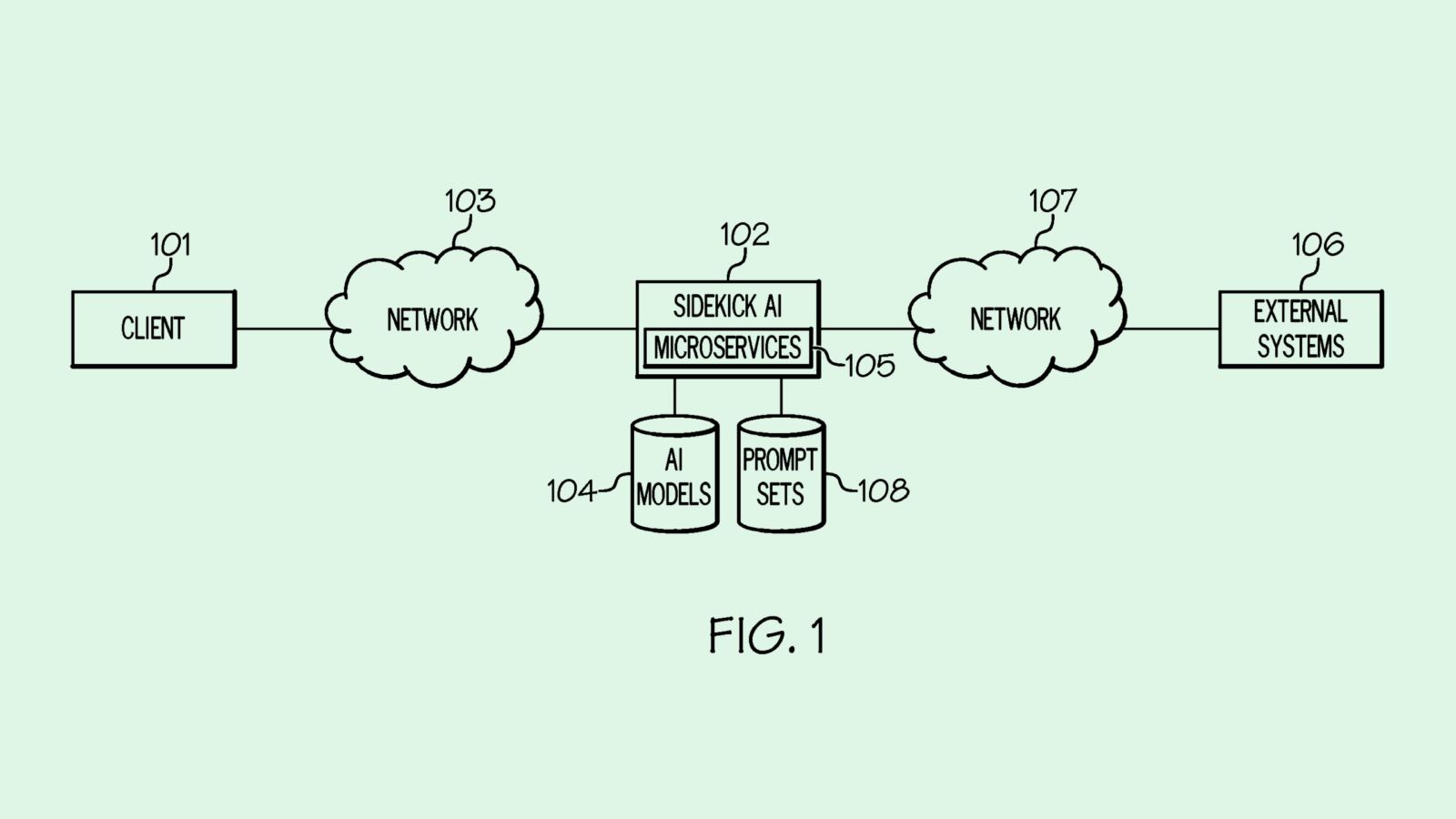Happy Monday and welcome to CIO Upside.
Today: How the shift away from the traditional search engine to AI apps could force marketers to change their strategies. Plus: Going “back to basics” on security could save your business from a breach; and IBM’s recent patent seeks to fix AI hallucination with context.
Let’s jump in.
Shifting Away from Search, Businesses Need to Keep Up With the AI ‘Answer Economy’

As people ditch search engines as their go-to query tool in favor of AI, businesses may be forced to adapt.
New data from SOCi shows that search impressions are already down 10% year-over-year across thousands of multi-location businesses, and the decline is only accelerating. The shift is poised to disrupt how people interact with brands, pressuring businesses to change their strategies for reaching customers, experts told CIO Upside.
Testifying in a recent Google antitrust trial, Apple’s Senior Vice President Eddie Cue said that Safari searches are down for the first time in 22 years. Apple might end its long-standing partnership with Google to consider AI alternatives instead, Cue suggested.
“The shift from traditional browsers to AI apps like ChatGPT, or Google’s Gemini, is happening faster than most realize,” Matt Aird, CTO and co-owner of Custom Neon told us. Aird said that Custom Neon has seen a 5% to 10% drop in organic traffic, with fluctuations tied to users bypassing browsers for AI apps.
Risking Obscurity
So how can businesses withstand this change? Marketers can survive by adapting to the new “answer economy,” aligning their strategies with AI’s growing role, said Tifenn Dano Kwan, CMO of Amplitude. “Those stuck in outdated content models risk fading into obscurity.”
- Some marketers may focus on brand mentions and topical authority to become the names that AI surfaces most. “They’ll stop obsessing over generic, SEO-driven content that tries to cover every possible search, and instead focus on providing the specific information customers are asking for, tailored personally to them,” said Kwan.
- The role of SEO, meanwhile, will completely change. “This is where Generative Engine Optimisation (GEO) comes in,” said Charlie Marchant, CEO at Exposure Ninja. Instead of fighting for a top ranking, GEO is about being the source that AI tools trust and recommend.
- Banners and links will likely disappear, replaced by native ads embedded in AI responses, said Andrew Dyuzhov, marketing director at Selzy. “We’ll shift from pay-per-click to pay-per-response: Brands will pay to be included in the AI’s contextual answer,” said Dyuzhov. Google recently confirmed it began rolling out ads in AI mode and AI Overviews in the US, signaling that sponsored AI content is already here.
This shift becoming a reality comes down to the Justice Department’s monopoly ruling against Google. However, despite the fact that the company is at risk of having to sell a major facet of its business, parent company Alphabet does not seem fazed.
Alphabet CEO Sundar Pichai said in court that AI will play a “huge” role in search moving forward. Pichai added that Gemini AI will be part of paid agreements with other companies, just like Google Search has been. Remediation actions are expected to be ordered by the court. In his testimony on the case, ChatGPT’s head of product, Nick Turley, said OpenAI would be interested in buying Google’s search business.
The rapid rollout of Gemini is less about innovation and more about survival, Marchant said, with Google attempting to defend its territory as users migrate to AI-first tools. The outcome of the monopoly case could provide the framework that Google needs to maintain dominance.
“The fact that OpenAI would even entertain buying Google shows how fundamentally the ground has shifted,” Marchant said. “A decade ago, that idea would’ve been unthinkable — now it reflects how AI is defining the future of how we access and search for information.”
The challenge? AI ranking algorithms are currently opaque and unstable, and offer little predictability or control, Dyuzhov said. To stay ahead, companies must start adapting now — rethinking content, marketing and customer engagement strategies to remain visible and relevant in a world increasingly shaped by AI.
“We’re entering a future where visibility within AI systems will play a major role in how customers discover products and services,” Dyuzhov said.
Your Colleagues Should Really Know How, By Now…
…but they don’t.
So it’s on you to explain that one task, over and over, for the umpteenth time. That one tricky end of month process. That one trick on Quickbooks.
It’s time to free yourself from repetitive conversations and explainers with the help of AI-powered documentation. Guidde is a GPT-powered tool that helps you explain the most complex tasks in seconds with AI generated documentation:
- Turn boring documentation into stunning visual guides
- Save valuable time by creating video documentation 11x faster
- Share or embed your guide anywhere for your team to see
Simply click capture on our browser extension and the app will automatically generate step-by-step video guides complete with visuals, voiceover and call to actions.
The deal closer? Guidde is 100% free.
How Enterprises Can Fortify Cybersecurity ‘Weak Links’

Hackers are getting better at finding the cracks in our armor.
Last week, data-broker giant LexisNexis disclosed a breach in which hackers obtained the personal data of more than 364,000 people. The records included names, birth dates, phone numbers, addresses, emails, Social Security numbers and drivers license numbers. Though LexisNexis has revealed little about the attack, the hacker was able to access the information through the company’s GitHub account.
The attack highlights the need for enterprises to “go back to basics” to protect themselves properly, said Rob Hughes, chief information security officer at security firm RSA.
Though enterprises can bulk up their cybersecurity measures in many ways, many often forget fundamental digital hygiene, such as strong credentials and multifactor authentication. The incident is also a “great case for zero trust,” or the idea that no user or device within a network is trustworthy by default, Hughes said. “You want to make sure your identity is in good shape.”
Cybersecurity Triad
Maintaining strong cybersecurity requires strengthening the defenses of a “triad” of systems, said Hughes: Identity operations, device enrollment and help desk. “If you don’t have good controls around all three of those things, then you’ve got weak links in your chain.”
- For example, while multifactor authentication could limit breaches on the identity side, bad actors may attempt to impersonate employees to infiltrate an organization through its help desk, Hughes said.
- These actors can also sneak in with new device enrollment, or when employees are onboarding to an organization, he added.
- “There’s a push more towards that social engineering aspect of how you can get in and break that chain,” Hughes said.
Social engineering is why the weakest security links in an organization are often its people, Hughes said. Teaching employees to remain cautious and having protocols to fall back on when approached with imposters or difficult scenarios could mean the difference between avoiding and falling victim to a devastating breach. “That’s how social engineering works,” he said. “They feel like they’re rushed, or someone’s putting pressure on them.”
“It all comes down to the culture,” said Hughes. “Not every company has that backdrop or expectation of secure by default.”
IBM Patent Introduces Context to Fix Hallucinations

When it comes to AI models, more context is always better.
IBM may have found a way to give its agents a hand: The company is seeking to patent a system for “enhancing accuracy and reducing hallucinations” in generative AI outputs using context integration and “multi-AI-model” interaction. As the lengthy title of the patent application implies, the system basically gives AI models additional data to work with as a means of making its outputs more precise and relevant.
“AI hallucinations may occur due to various factors, including overfitting, training data bias/inaccuracy, and high model complexity,” IBM said in the filing. “Unfortunately, there is not currently a means for effectively limiting such misrepresentations.”
When a user interacts with an AI model, the model leverages “context,” which in this case doesn’t simply mean more user-specific data. IBM’s system may leverage other AI model outputs, task-specific agents, documents, previous conversations or an “intermediary” system, such as the user’s personal virtual assistant, to help make responses more accurate.
“By introducing such context, there is a greater confidence that the output of the artificial intelligence model is more accurate,” IBM noted.
Though hallucination rates have been on the decline as AI models get more powerful, these incidents of inaccuracy still occur – and can still have major consequences depending on the context in which they’re used. One such incident occurred with Anthropic’s model Claude in recent weeks, when the firm’s lawyers admitted to using an erroneous citation hallucinated by the chatbot.
IBM isn’t the first tech firm trying to wrap its head around hallucination. Several tech giants have filed patents seeking to limit these slip-ups, including Amazon, Microsoft, and Adobe. However, while it’s possible to mitigate such incidents, it’s likely that they’ll never fully be eliminated. That makes monitoring and additional context even more vital as AI gains more autonomy with the tech industry’s push towards an agentic future.
Extra Upside
- Data Center Demand: Amazon pledged to aggressively expand it’s data center footprint globally.
- AI at Home: Google released an app that allows users to download and run AI models on smartphones.
- Meta Moves: Meta plans to replace workers with AI to automate privacy and integrity reviews of content.
CIO Upside is a publication of The Daily Upside. For any questions or comments, feel free to contact us at team@cio.thedailyupside.com.

